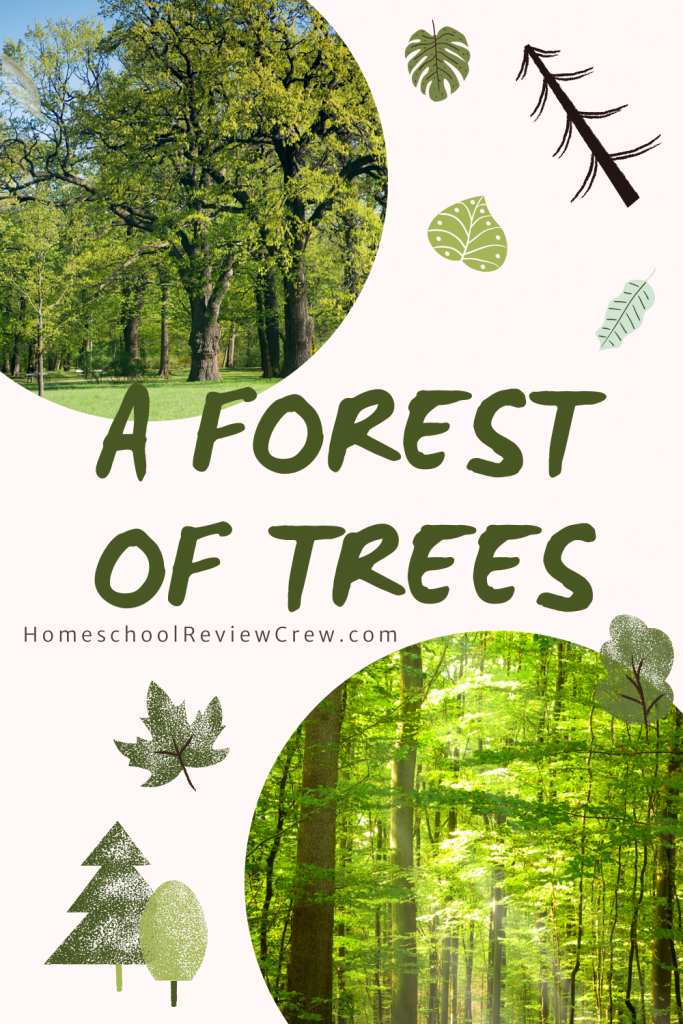No matter the time of year, studying trees can add a unique twist to your homeschool nature studies. And because we each live in different areas, we can learn from each other as we share about our tree nature studies. What might be a common tree in my state, may not even grow in your state or country.
Homeschooling can bring us together over a variety of topics like this week’s Homeschool Review Crew Social Media/Blog Challenge and link up.

Where to Start?
The easiest way to study trees is to go outside and look at those around your house, apartment complex, or a local park. Start snapping photos, collect fallen leaves, take bark rubbings, calculate height and see if you can identify the trees with your children. Perhaps you might like to start a nature journal to keep all the data your children collect as they study local trees. Anything from a simple notebook to a fancy sketchbook can be used to gather your tree data.
Do You Need More Structure?
Of course, if you need more structure in your homeschool you can seek out unit studies, science lessons, and other ways to study trees. In the past, Homeschool Review Crew members have reviewed a science set from Memoria Press – The Book of Trees – which is geared towards grades 6-8. This would be wonderful if you wanted a full science course to study trees. But what if you are only looking for a few weeks? NatureGlo’s eScience offers a variety of online lessons where you can incorporate the study of trees and nature into your homeschool days.
Bringing the Whole Family Together
There are also multiple ways to learn about trees with all your children in your homeschool involved in the lessons. If you have children in first through fourth grades, SchoolhouseTeachers.com has a course made up of small unit studies called Let’s Do Science Outside. In this course, your family will learn about insects as well as trees. There are some great sheets pre-made to help you track what types of trees you see as you take a walk through your town. In the Nature and Outdoors Homeschool Science Course on SchoolhouseTeachers.com, homeschooled children in grades first through eighth grades will learn through science experiments, arts and crafts, journaling, photography, and other hands-on activities about evergreens, acorns, and more over the course of 14 weeks.

One Final Project
If you want to try something fun with your children, you could create a sticky nature collage in your homeschool with the items you find from your studies of local trees. Children will be able to preserve their finds and create lasting memories of their homeschool days. All of these ideas offer your homeschool family many wonderful opportunities to study trees!
Let’s Encourage Each Other!
Do you have a favorite way to study trees?
We’d love to hear your ideas in the comments below.
Thank you to Kristen at A Mom’s Quest to Teach for writing this Crew Article.
